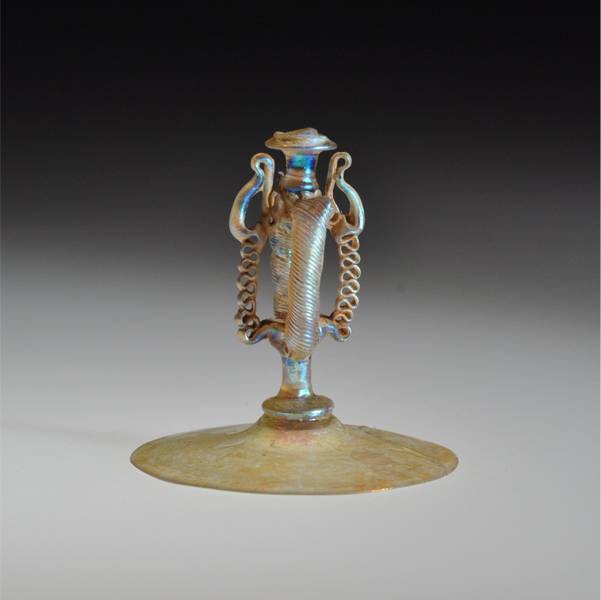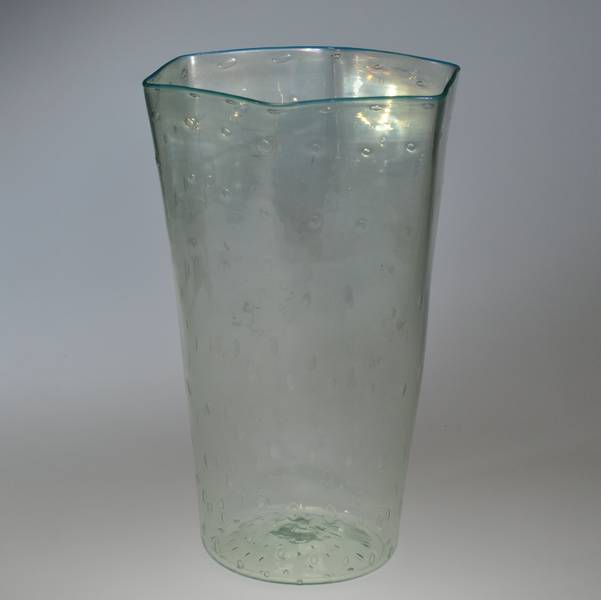Iridescence
Renaissance
Always a result of aging

An example of iridescence resulting from the long-term burial of a 17th-century façon de Venise goblet fragment. Probably Low Countries. Private collection.
19th Century
Often created artificially for decorative purposes

An example of iridescence resulting from chemicals (stannous chloride?) having been sprayed on the hot glass during the last stages of manufacture. Made after 1860. Private collection.